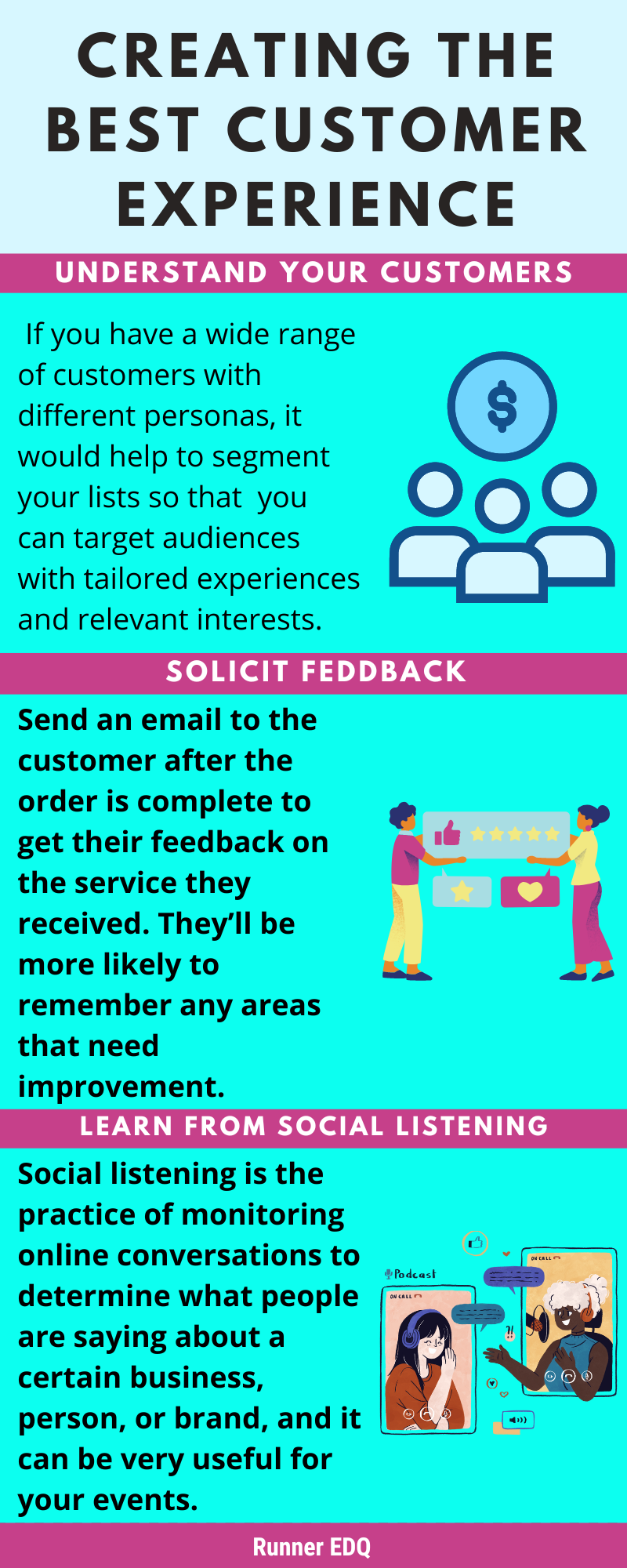The term “customer experience” refers to how consumers feel after interacting with a company. It is influenced by several things, including the quality of their interactions at the various touchpoints of the customer journey – leaving them with a perception of the brand’s identity. When the customer experience is a positive one, the customer is more likely to become a repeat customer or a supporter of the brand – one that will engage in highly effective word-of-mouth marketing and promote the company without being asked.
Creating a positive customer experience is key to cultivating loyal customers. Therefore, investing in the customer experience should be part of your customer retention strategy.
Understand your customers
Understanding your customers and their individual preferences is the first step in providing outstanding service and delivering the best customer experience. If you have a wide range of customers with different personas, it would help to segment your lists so that you can refine your target marketing. With segmentation, you can target audiences with tailored experiences, ensuring that the first touchpoint is relevant to their unique interests and preferences.
Solicit feedback
Send an email to the customer after the order is complete to get their feedback on the service they received. Ask specific questions about each touchpoint and allow them to rate their experience, which will be simpler for them to do rather than provide long explanations. Another strategy would be to ask open-ended questions about what improvements you can make.
One of the best times to reach out to customers for their feedback would be right after they’ve completed an order. The experience is still fresh in their minds and they’ll be more likely to remember any areas that need improvement. Another opportunity to ask for customer feedback would be following a customer service call.
Learn from social listening
Social listening or social media listening describes the practice of monitoring online conversations to determine what people are saying about a certain business, person, or brand. Social listening can be used for campaign analysis and event monitoring, allowing a brand to understand how a campaign or event resonates with its audience. It also helps reveal insight into how competitors are performing with the same audience.
Conversational data that is collected from social listening can be used to craft better campaigns in the future. And by monitoring and analyzing social media channels for mentions of brand names, keywords, products, and even competitors in social conversations, brands can not only identify unhappy customers but can use this insightful data to gauge the quality of the customer experience.
For social listening to be successful, your brand needs to first determine what to listen for. Using keywords is a good way to focus on the right social conversations. While there are social listening tools to collect social data, the best place to start gauging the sentiments of your current audience.
To learn how we can help you and your business, complete the contact form.

